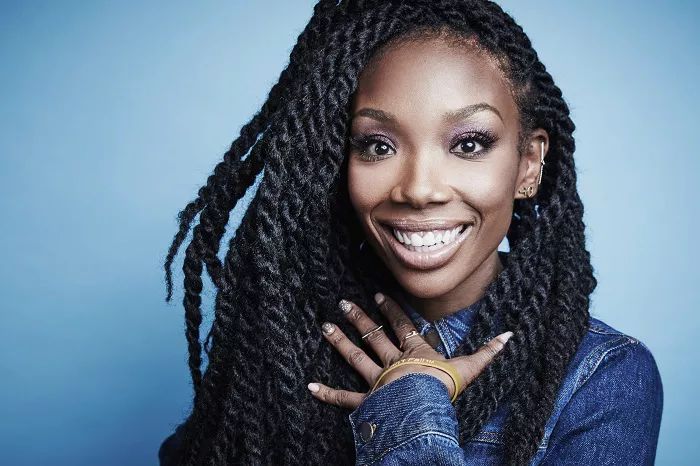As the new year begins, many people make plans for the months ahead—organizing holidays, birthdays, and significant life events. For a growing number of Black women, this also means mapping out their hair journey for the entire year. The trend of creating “hair calendars” began gaining traction on TikTok in the latter half of 2024. These calendars serve as a detailed roadmap, outlining the various hairstyles Black women intend to sport throughout the year, helping them reduce the stress of last-minute decisions and ensuring their hair is “done” year-round.
Hair calendars go beyond just planning the next look—they also allow women to set hair goals such as growing out their hair, maintaining a healthy routine, or even rebranding their image. For many, it’s a revolutionary concept. While the idea of planning one’s hairstyle for an entire year may seem unconventional, it provides a structured approach that can simplify decision-making and offer financial and logistical benefits. By organizing their styles ahead of time, women can save money, book trusted stylists in advance, and ensure their hair is always in top form—avoiding the unpredictable challenges of scheduling a last-minute appointment with unknown stylists.
Yet, the concept also raises concerns about the health of Black hair. Should hair be styled continuously without breaks? Are protective hairstyles still effective if the hair isn’t allowed to rest and recover in between styles? Moreover, the pressure for Black women to always maintain a polished appearance—especially given viral social media trends of high-maintenance beauty routines—can be overwhelming. Shouldn’t some time for natural hair “breathing” be factored into the equation?
Despite these concerns, experts like Harriet Kessie-Cudjoe, co-founder of Afrotherapy Salon, suggest that hair calendars can indeed be beneficial if used thoughtfully. Kessie-Cudjoe emphasizes the importance of flexibility in such plans. She believes a hair calendar should serve as a guide rather than a rigid schedule. Given that hair needs can change based on factors like weather, lifestyle, and unexpected issues such as breakage, adaptability is key.
Financial and Practical Benefits of a Hair Calendar
A significant benefit of a well-organized hair calendar is the ability to manage the substantial costs associated with Black haircare. Studies have shown that Black women in both the US and UK typically spend six times more on haircare than their white counterparts. According to Unbothered’s 2024 Black Haircare survey, popular protective styles like medium-length box braids can cost anywhere from $200 to $300, with many stylists requiring a 25% upfront payment. By planning hair appointments well in advance, women can budget and manage their spending over the course of the year.
Additionally, Kessie-Cudjoe’s salon incorporates a monthly direct debit system to help clients stay on top of their haircare routine and budget. This approach, she believes, can promote healthier hair, support growth, and allow for specific goals such as repairing damaged strands or retaining length.
Seasonal Hairstyles: Tailoring Your Look to the Weather
Different seasons offer unique opportunities to experiment with hairstyles that suit both the climate and personal needs. Here are some expert tips for choosing the best styles each season:
Winter: Cold, dry weather can lead to hair breakage, so protective styles like braids, twists, or wigs are ideal for preserving hair moisture and preventing damage. Satin-lined hats and scarves are recommended to protect edges and keep hair hydrated.
Spring: As temperatures rise, it’s an excellent time to let natural hair breathe with styles like wash-and-go, twist-outs, or braid-outs. Incorporating moisture-rich products is essential to prevent dryness as the weather changes.
Summer: For hot climates, low-maintenance styles like braids thrive, keeping hair off the neck and reducing daily styling. If swimming, protective leave-in conditioners can shield hair from chlorine or saltwater damage. Alternatively, summer is a great time to experiment with shorter cuts or vibrant colors.
Autumn: With cooler temperatures, it’s ideal to focus on transitioning styles like wigs, faux locs, or crochet braids. Moisturizing treatments should be incorporated to prepare hair for the dryness of winter.
Planning for Special Occasions: Hairstyles for Holidays and Travel
When planning for holidays or vacations, Black women should choose low-maintenance, protective hairstyles that withstand heat, humidity, and water activities. Styles like braids (box braids, knotless braids, or cornrows), faux locs, and two-strand twists are perfect for these conditions. For natural textures, styles such as Bantu knots or high puffs offer a simple way to manage hair in hot and humid climates.
Incorporating Breaks, Trims, and Treatments into the Calendar
While hair calendars can be highly beneficial, Kessie-Cudjoe stresses the importance of allowing hair to rest between styles. Continuous styling without breaks can lead to stress and damage, especially for those who frequently wear protective styles like braids. Moisture treatments and protein-balanced care are necessary when transitioning from one style to the next, and allowing the hair to “breathe” is vital for maintaining its health.
Kessie-Cudjoe recommends factoring in regular trims every three to four months to keep hair in optimal condition. She advises that the ideal hair plan should be personalized, taking into account the individual’s hair goals, lifestyle, career demands, and seasonal changes.
Conclusion: The Flexibility of Hair Calendars
While hair calendars offer a structured approach to managing Black hair, it’s important to remember that haircare is deeply personal and often influenced by changing circumstances. The versatility of Black hair allows for constant reinvention, and having a plan in place is a great way to ensure diverse and healthy styles throughout the year. As we head into 2025, following expert advice and listening to our hair’s needs will ensure that Black women can maintain not only stunning styles but also optimal hair health.
Related Topics:
How Long Should You Keep in Crochet Braids
How to Make Your Braids Longer


